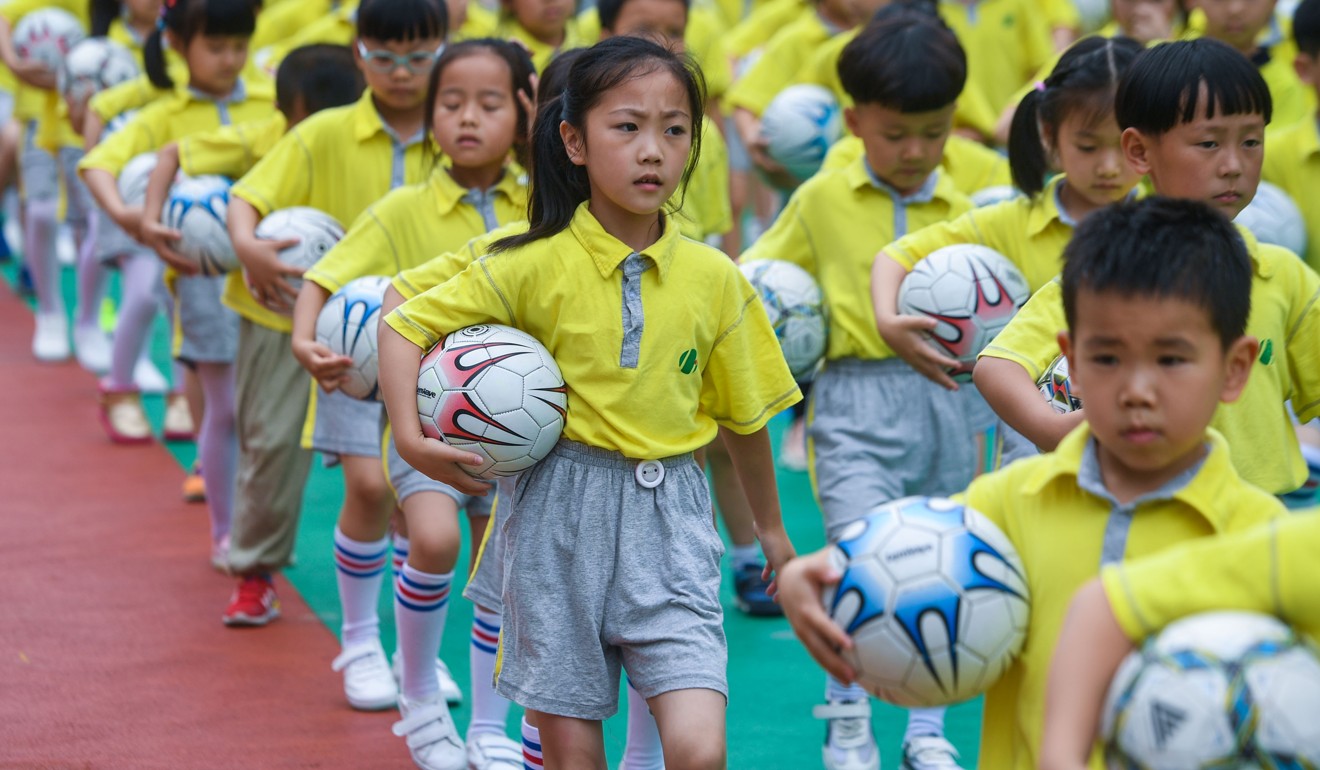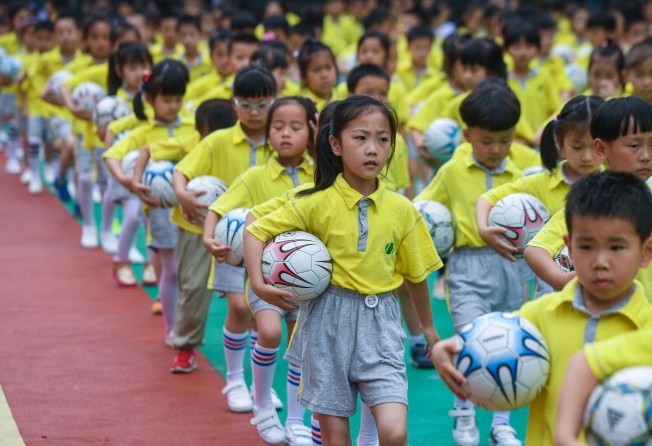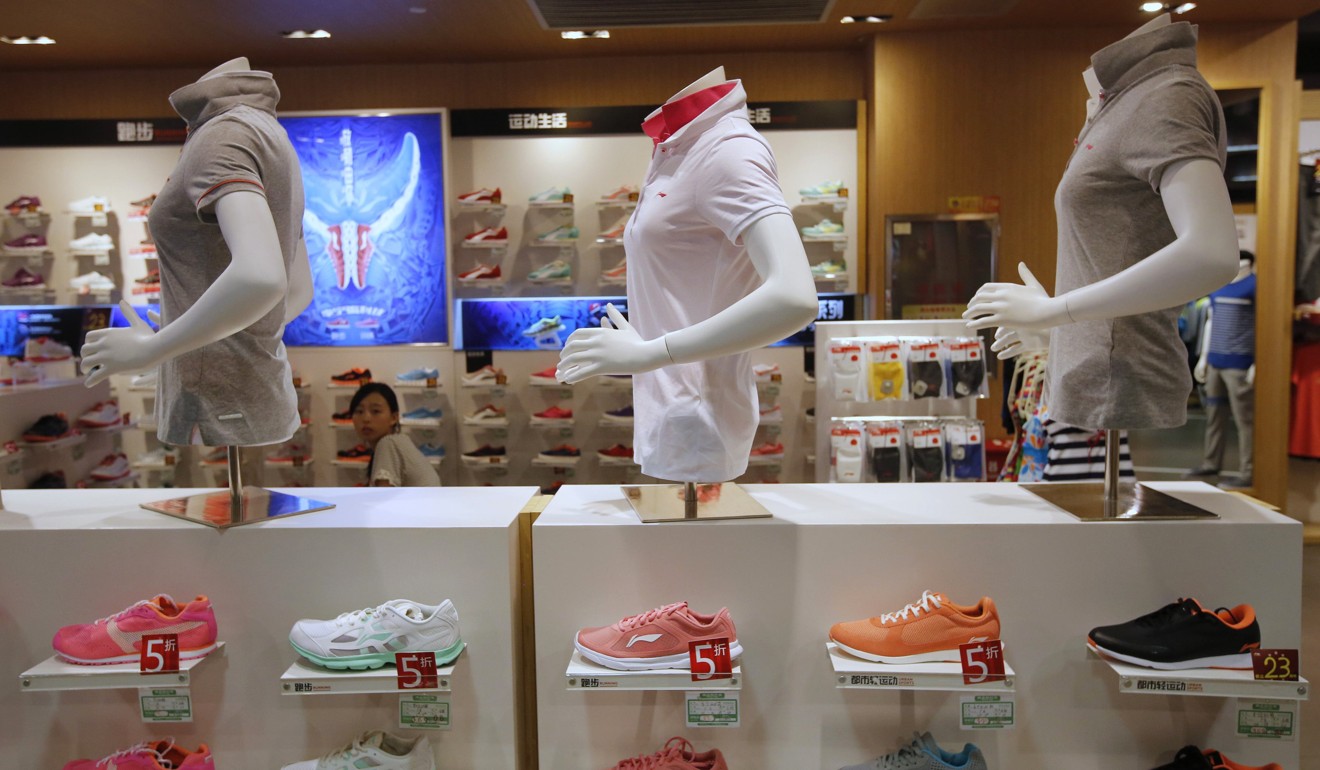
China’s sportswear retailers eye kid’s segment for faster growth

China’s major sportswear retailers are being upgraded by investment banks on expectations of rising profits driven by sales growth in the children’s segment.
“The kids segment has been the engine for top-line growth for domestic sporting goods companies when industry giants such as Anta Sports, 361 Degrees and Li Ning are seeing normalised growth in adults segment,” said Scott Chan, an analyst from HSBC.
China’s largest sportswear maker Anta recorded 30 per cent growth for its kids segment last year, which accounted for 10 per cent of its total revenue. 361 Degrees saw annual growth of 11 per cent in its kids segment which accounted for 13 per cent of total sales.
“Spending on kids has been booming thanks to consumption upgrades, with parents increasingly willing to purchase better quality items for their children,” said Chan. “Longer term, the loosening of the one-child policy should also help to expand volume.”
The mainland Chinese market for children’s wear is forecast to grow 8 per cent this year to 180 billion yuan (US$26.5 billion), according to research house Euromonitor.
Compared to casual wear such as children’s clothing brand Balabala, domestic sportswear brands are still relatively under-represented in the overall kids segment and the market is highly fragmented, with the largest player Anta only holding 0.7 per cent market share.
Anta launched its Anta Kids sportswear line in 2008 to tap the high growth potential in the mainland’s kids’ sportswear market. “Following the implementation of the two-child policy by the Chinese
government, it is widely expected that the growth in the kids market segment will accelerate,” Ding Shizhong, chairman of Anta, said in the company’s latest annual report.
China sportswear leader Li Ning announced plans to expand into the children’s wear market earlier this year. “We saw the company’s first Li Ning Young offering, which differentiates itself by targeting 6 to 12 year olds rather than the overall kids segment and we think their product offering looks promising, especially with a basketball series leveraging their Wade lines,” said Chan.

The number of marathons and consumers participating in them is growing rapidly in China as the sport gains widespread popularity, as evidenced by the increasing prevalence of running tracks and photos of people running being posted on social media.
In 2016, there were 328 marathon races in China with 2.8 million participates, up from 134 races and 1.5 million participants in the previous year, according to data from Euromonitor and HSBC.
The strategy of teaming up with fitness centres to promote brands and products in gyms “will not only help brands build their reputation, but also provide more targeted advertising, bringing them closer to the right consumers”, said Chan.
With expectations of strong profitability, China’s sportswear makers have been given “recommend” ratings by a number of investment banks.
HSBC expects Anta to deliver 24 per cent year on year profit growth for the first half of 2017, driven by strong momentum in its top-line products. Sales of its high-end Fila brand grew more than 40 per cent year on year in the first quarter and the pace is expected to accelerate in the second quarter as discounts are reduced on new product launches.

Credit Suisse maintains an “outperform” on Anta after it saw high single digit year on year growth in fourth quarter orders received during a recent Chinese trade fair.
Regarding the outlook for Li Ning, HSBC remains positive on back of the company’s recovery both in market share and profitability. “The channel restructuring continues to yield results with more flexible inventory management,” added Chan. “ As the company continues to deliver stable revenue growth, our confidence in Li Ning’s margin recovery grows.”
Guotai Junan reiterates its “accumulate” rating for Li Ning, with analyst Terry Hong saying: “The narrowing discount rates will bring same store sales growth in the second quarter back into positive territory.”
However, Hong said the downside includes strong competition from peers and warned that Li Ning’s expenses and operational risks may be higher due to the increasing number of self-operated stores.